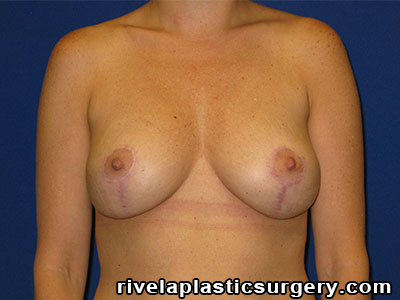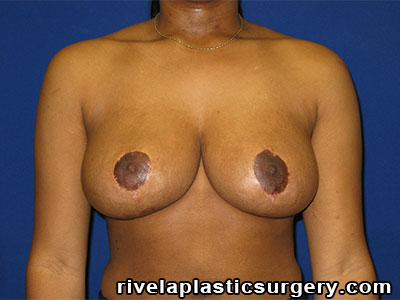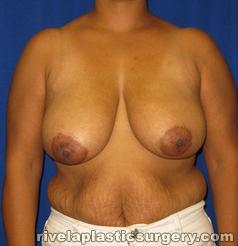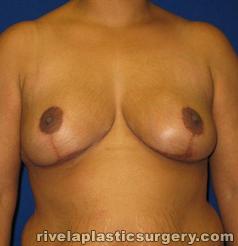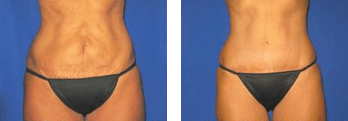Home | Procedures | Breast | Breast Reduction
On This Page
What is Breast Reduction?
Breast reduction surgery, medically referred to as reduction mammoplasty, is a plastic surgery procedure intended to reduce overly large breasts and make them more symmetrical and proportioned to the rest of the body.
Breast reduction, or reduction mammoplasty, is a procedure intended for women with large, pendulous breasts who often face a variety of health problems caused by having excessive breast size. These problems can include back and neck pain, skin irritation, skeletal deformities, and even respiratory problems.
What Can Breast Reduction Treat?

Breast surgery offers cosmetic benefits but can also relieve physical discomfort. The procedure involves removing fat, glandular tissue and skin from the breasts with the intent of making them smaller, lighter, and firmer. This alleviates back and shoulder pain as well as discomfort from bra straps that dig in. Additionally, the size of the areola (the darker pigmented skin around the nipple) is reduced to fit the new proportions of your smaller breasts.
The goal of this procedure is to give individuals smaller and firmer-shaped breasts that are more proportionate to their bodies. Attaining smaller, firmer, and more attractive breasts through breast reduction surgery no longer means sacrificing your body’s natural look and feel. Dr. Rivela, consistently voted as the top plastic surgeon in The Woodlands by Woodlands Online, has performed numerous breast reduction surgeries. He can enhance your breasts’ appearance and improve your overall health with natural-looking, beautiful results.
Your Breast Reduction Consultation with Dr. Rivela
During your consultation, your medical history will be carefully reviewed with special attention to any risk factors. Detailed measurements of the size and shape of your breasts and chest will be obtained. Nipple positioning, skin quality, and the amount of breast tissue that needs to be removed will be evaluated and information regarding incision location, along with any possible need for ancillary procedures (liposuction, etc.) will be discussed.
Risks are carefully reviewed and Dr. Rivela welcomes questions regarding all aspects of your procedure. Laboratory testing and medical clearance may be needed due to a patient’s medical history, along with information regarding smoking and the use of medication. Prescriptions will be given prior to surgery at your pre-operative visit.
The success and safety of your breast reduction procedure depend very much on your complete candidness during your consultation. You’ll be asked a number of questions about your health, desires, and lifestyle.
Be prepared to discuss:
- Why you want the surgery, your expectations, and desired outcome
- The options available in breast reduction surgery
- Medical conditions, drug allergies, and medical treatments
- Use of current medications, vitamins, herbal supplements, alcohol, tobacco and drugs
- Previous surgeries
Dr. Rivela may also:
- Evaluate your general health status and any pre-existing health conditions or risk factors
- Examine and measure your body, including detailed measurements
- Take photographs for your medical record
- Discuss your options and recommend a course of treatment
- Discuss likely outcomes of breast reduction surgery and any risks or potential complications
MEET DR. RIVELA
With over 25 years of experience, Lucian J. Rivela M. D., F. A. C. S. is proud to offer some of the most innovative procedures available in cosmetic and plastic surgery, aesthetic treatments, and skincare. Dr. Rivela is board certified and is a member of both The American Society of Plastic Surgeons and The American Society of Aesthetic Plastic Surgery. He and his staff are dedicated to helping you be your best confident, natural, and authentic self.
LEARN MORE
Your Breast Reduction/Reduction Mammoplasty Procedure
 The procedure can vary, but it is almost always performed under general anesthesia. The doctor will likely make a small incision similar in shape to an anchor or inverted keyhole that will encompass the area from the top of the nipple to the crease of the breast. Then, any excess fat, skin, and tissue will be removed and the remaining skin and areola will be repositioned. Breast reduction surgery can take from 1-3 hours per breast.
The procedure can vary, but it is almost always performed under general anesthesia. The doctor will likely make a small incision similar in shape to an anchor or inverted keyhole that will encompass the area from the top of the nipple to the crease of the breast. Then, any excess fat, skin, and tissue will be removed and the remaining skin and areola will be repositioned. Breast reduction surgery can take from 1-3 hours per breast.
About the Procedure
AnesthesiaGeneral
Location of operationHospital or surgery center
Length of surgery3-4 hours
Length of stayOutpatient
Breast Reduction Recovery Notes
After surgery, your breast area will be wrapped in gauze and an elastic bandage or surgical bra. You will have to continue wearing the bra/bandage for several days even after the gauze has been removed. You can expect to experience soreness and swelling for several weeks to months while your breasts heal. Patients typically resume work and other activities quickly after surgery (between 1-6 weeks), depending on the individual.
Discomfort: For a short period following surgery, but will be prescribed medication to help with the pain.
Swelling and Bruising: Any swelling or bruising should improve in two weeks.
Bandages: Bandages will be removed within one week, and for about a month patients should wear a sports bra or ace wrap. Patients should avoid underwire bras.
Stitches: Absorbable stitches that are buried under the skin and few require removal.
Daily activities: Normal activities may be resumed within a 10-day period. Lifting or pushing anything heavy should be avoided for at least six weeks.
Work: Expect to return to work within 2-3 weeks.
Exercise: Resume exercise in six weeks.
Driving: May be resumed in 1-2 weeks.
Final Result: This will be seen after the scars have matured, which will be about one year.
About the Recovery Process
DiscomfortModerate
Swelling & Bruising 2 weeks
Bandages1 week
StitchesAbsorbable
Work2-3 weeks
Exercise6 weeks
Driving1-2 weeks
Final Result1 year
Related Blog

The Benefits of Choosing a Breast Reduction
Breast Reduction FAQs
How much do breast reductions cost?
When can I wear a normal bra after breast reduction?
Can you drink alcohol after breast reduction?
How painful is a breast reduction?
What happens after breast reduction?
How long does it take to recover from a breast reduction?
Who is a good candidate for breast reduction?
What are the risks involved with breast reduction?
Can breast grow back after reduction?
Does insurance pay for breast reduction?
How do you know when you need a breast reduction?
How many cup sizes can you go down with breast reduction?
Is it OK to wear a sports bra after breast reduction?
What are the benefits of breast reduction surgery?
Staff was welcoming and always super helpful
I had a breast reduction through Dr. Rivela and he did a fantastic job. Every time I was in the office the staff was welcoming and always super helpful. Nurse Abby is also such a lovely person and has been with me every step up the way. They were quick, easy to work with, and great with me all throughout the process. …Read More…Read Less







